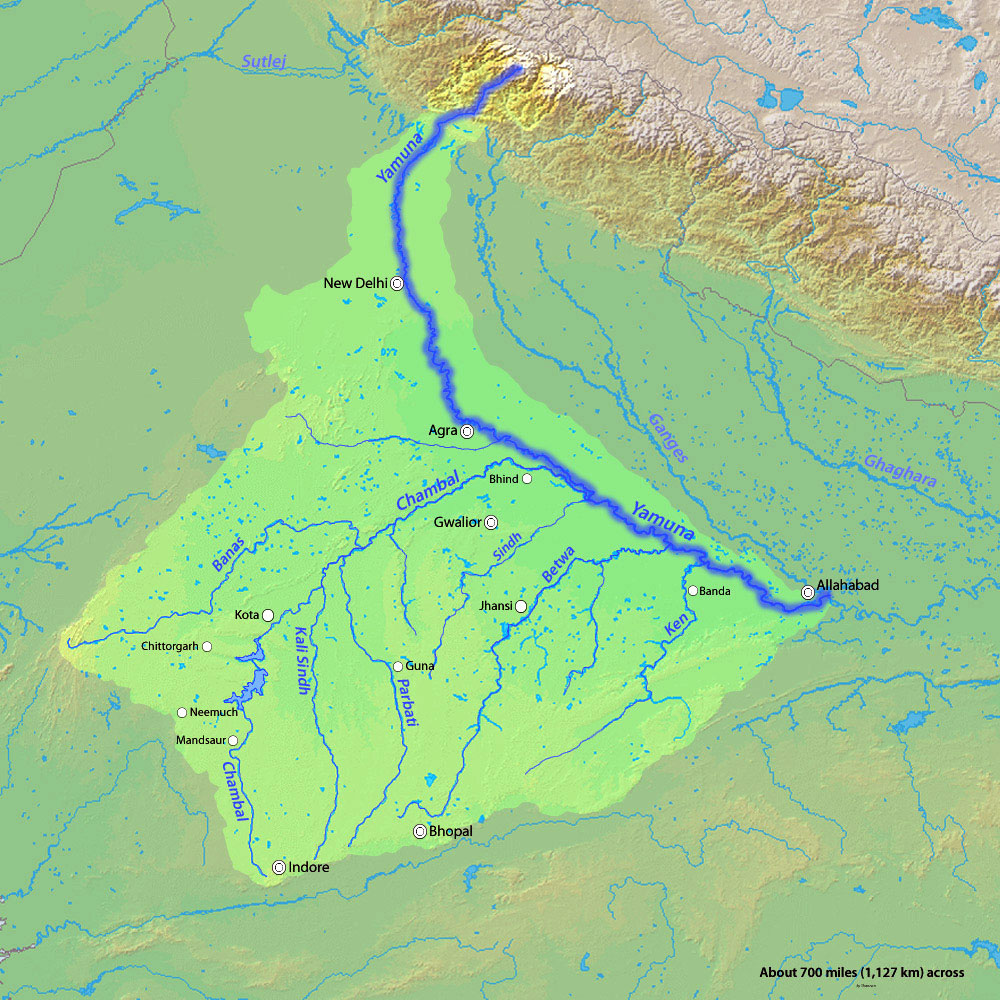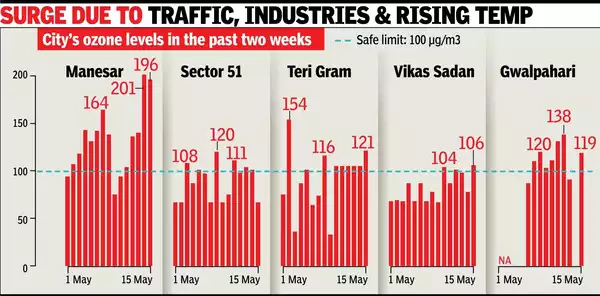Uttarakhand Switch to Hindi
Plastic Free Ganga
Why in News?
The Wildlife Institute of India (WII) and Social Development for Communities (SDC) Foundation have launched a collaborative initiative titled “Flowing Towards a Plastic-Free Future” to free the Ganga river and its 15 tributaries from plastic pollution and conserve the aquatic and terrestrial ecosystem.
Key Points
- The drive will take place over five days in seven states, namely Uttarakhand, UP, Bihar, West Bengal, Himachal Pradesh, Madhya Pradesh, and Jharkhand.
- The initiative focuses on raising awareness about detrimental effects of plastic on freshwater biodiversity.
Wildlife Institute of India
- It is an autonomous institution under the Ministry of Environment, Forest and Climate Change.
- It was established in 1982.
- It is based in Dehradun, Uttarakhand.
- It offers training programs, academic courses, and advisory in wildlife research and management.
Ganga River
- It is the longest river of India flowing over 2,510 km of mountains, valleys and plains and is revered by Hindus as the most sacred river on earth.
- The Ganga basin outspreads in India, Tibet (China), Nepal and Bangladesh over an area of 10,86,000 Sq.km.
- In India, it covers states of Uttar Pradesh, Madhya Pradesh, Rajasthan, Bihar, West Bengal, Uttarakhand, Jharkhand, Haryana, Chhattisgarh, Himachal Pradesh and Union Territory of Delhi draining nearly 26% of the total geographical area of the country.
- It originates in the snowfields of the Gangotri Glacier in the Himalayas.
- At its source, the river is called the Bhagirathi. It descends down the valley upto Devprayag where after joining another hill stream Alaknanda, it is called Ganga.
- The principal tributaries joining the river from right are the Yamuna and the Son.
- The Ramganga, the Ghaghra, the Gandak, the Kosi and the Mahananda join the river from left. The Chambal and the Betwa are the two other important sub- tributaries.
- The Ganges River Dolphin is an endangered animal that specifically habitats this river.
- The Ganga joins the Brahmaputra (Jamuna) in Bangladesh and continues its run under the name Padma.
- The Ganga widens out into the Ganges Delta in the Sundarbans swamp of Bangladesh, before it ends its journey by emptying into the Bay of Bengal.


Uttarakhand Switch to Hindi
Additional Virtual Classrooms in Uttarakhand
Why in News?
The Uttarakhand government plans to introduce 840 additional virtual classrooms with the assistance of Telecommunications Consultants India (TCIL).
- These virtual classrooms will enable teachers in Dehradun to conduct live online classes for students.
Key Points
- In the first phase, the scheme is already extended to 1.9 lakh students between classes 6 to 12.
- Authorities are currently working to ensure that underprivileged students receive education without any technical issues.
- Coaching will also be provided to students preparing for medical and engineering entrance exams to bring socio-economic change.
- The program is currently being implemented in 500 government schools spread across the 13 districts of the state.
- It utilizes Remote Operated Terminals (ROTs) and Satellite Interactive Technology to enable interactive communication in virtual classrooms, enabling students to engage in both online and offline learning.
- Additionally, parents and teachers have the ability to monitor their progress through dedicated applications.


Uttar Pradesh Switch to Hindi
Illegal Mining on Yamuna Banks
Why in News?
In a joint raid against sand mining mafia the mining department and Loni administration seized earthmovers, trucks, and trolleys from the Yamuna banks in Loni’s Pachera.
Key Points
- A section of land spanning 15 kilometers in Loni along the Yamuna river, encompassing Pachaira, Badarpur, and Nauraspur villages, has been rented out for sand mining.
- The illegal sand mining was happening 1.5km away from the leased 48-acre land in Pachera, which has been rented for a 5-year term.
- To ensure sustainable river sand mining, it is vital to refill the mine pits created during sand extraction through the natural process of replenishment within an appropriate time frame.
- Illegal deep excavations often occur in sensitive locations along the riverbank, resulting in the formation of deep pits.
- In 2023, flooding in the Loni area caused significant damage, partly due to the deep pits left by illegal sand mining activities along the Yamuna river.
Yamuna River
- About: The Yamuna River is one of the major tributaries of the Ganges in Northern India.
- It forms an integral part of the Yamuna-Ganga Plain, one of the world's most extensive alluvial plains.
- Source: It has its source in the Yamunotri Glacier at an elevation of 6,387 meters on the southwestern sides of Banderpooch crests in the lower Himalayan ranges.
- Basin: It meets the Ganges at the Sangam (where Kumbh mela is held) in Prayagraj, Uttar Pradesh after flowing through Uttarakhand, Himachal Pradesh, Haryana and Delhi.
- Important Dam: Lakhwar-Vyasi Dam (Uttarakhand), Tajewala Barrage Dam (Haryana) etc.
- Important Tributaries: Chambal, Sindh, Betwa and Ken.
- Government Initiatives Related to Yamuna River:
- Yamuna Action Plan
- Delhi Government’s Six-Point Action Plan to Clean Yamuna by February 2025
Sand Mining
- Sand mining is defined as the removal of primary natural sand and sand resources (mineral sands and aggregates) from the natural environment (terrestrial, riverine, coastal, or marine) for extracting valuable minerals, metals, crushed stone, sand and gravel for subsequent processing.
- This activity, driven by various factors, poses serious threats to ecosystems and communities.


Haryana Switch to Hindi
Ozone Levels Breached Safe Limit
Why in News?
According to the Haryana State Pollution Control Board (HSPCB), the ground-level ozone level has exceeded safe limits in certain areas of the city over the past 15 days.
Key Points
- Data from air monitoring stations in Manesar, Sector 51, and Gwalpahari indicate multiple instances of surpassing the 100 micrograms per cubic meter (ug/m3) eight-hour ozone limit.
- Experts have characterized the situation as concerning, noting that the existence of ground-level ozone indicates increased levels of other pollutants such as nitrogen oxide (NOx) and sulphur oxide (Sox).
- These pollutants interact with sunlight to produce ozone, with this phenomenon predominantly happening during the day in locations experiencing traffic congestion or where multiple industries are active.
- Tropospheric ozone exposure poses health risks and can worsen conditions like asthma and chronic obstructive pulmonary disease.
- Officials from HSPCB stated that they have instructed local authorities to take steps to reduce road dust and burning of garbage.










%20MPPCS%202025%20Desktop%20E.jpg)
%20MPPCS%202025%20Mobile%20E%20(1).jpg)










.png)
.png)











 PCS Parikshan
PCS Parikshan






-min.jpg)